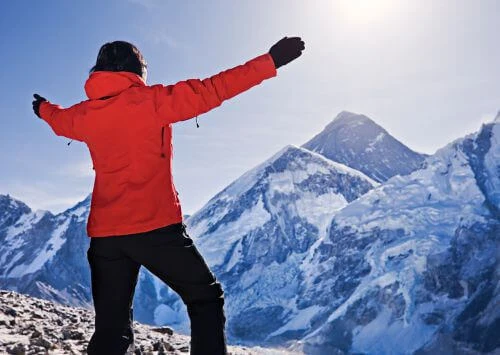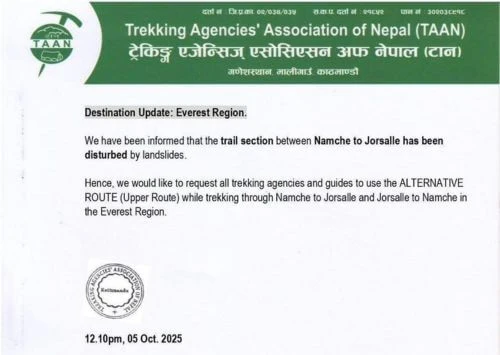Weather, festivals, and other events to look forward to in March at Everest Base Camp.
The conditions on the Everest Base Camp trail in March can vary depending on the specific location and the weather. However, in general, this time of year is considered the tail end of the winter season in the region, and the conditions can be challenging.
At lower elevations, the trail can be wet and muddy from snow melt, and some sections can be difficult to traverse. Higher up on the trail, the temperatures can drop well below freezing, and snow and ice can make it slippery and challenging to walk on. Strong winds can also be a factor, and clouds and fog can limit visibility.
However, it is important to note that conditions can vary greatly from day to day and even hour to hour and that it is always best to be prepared for the worst. Climbers should be equipped with warm and waterproof clothing and proper footwear and prepared to deal with the trail's challenges.
Despite the challenges, March can also be a great time to visit the Everest Base Camp Trail. The winter snow and ice can create a beautiful and unique landscape, and periods of clear weather can provide good conditions for trekking. However, it is important to be aware of the potential dangers and prepared for the challenges that come with trekking in this region.
For those feeling adventurous, March is the month to explore Everest Base Camp. Check out our guide to see what exciting activities are in store, including festivals, weather, and more.
March is an excellent time of year to visit Everest Base Camp for an adrenaline-filled adventure. Not only does the weather tend to be milder, but you’ll also be in time for some of the area’s most colorful festivals. Read on to learn more about what you can expect when trekking at Everest Base Camp in March.
Prepare for Weather Conditions
March at Everest Base Camp is usually mild, with temperatures ranging from 0 to 14 degrees Celsius. However, sudden weather changes can occur in minutes due to the high elevation (over 5,000 meters), so it’s important to pack accordingly. Be sure to include some lightweight clothing for warm days and a thick coat and other layers for when it gets cooler.
Look forward to Festivals and Celebrations.
Along with the pleasant weather, March is also a great time to take part in some of Everest Base Camp’s annual festivals and celebrations. On the 28th of March, Chhauni Mela takes place a colorful local festival in honor of Lord Shiva featuring religious songs and offerings. As well, Holi, the Festival of Colors, will be celebrated on the 2nd of April, where revelers will offer prayers to Hindu gods and have fun smearing each other with vibrant powders and coloring.
Consider Hiking Up the EBC Trails.
For those feeling especially adventurous, it’s the perfect time to take on a trek and embark on one of Everest Base Camp’s spectacular hiking trails. Traverse up the glaciers decorated in snow and get lost in beautiful mountain capes; climb to a fascinating world of frozen Buddhist prayer flags dangling from high mountain passes, winding between trickling streams and mesmerizing vistas. On a clear day, you can even spot breathtaking views of Mount Everest, making your trek truly memorable.
Visit the following Everest Region Attractions.
Beyond the trek, explore some of the unique attractions nearby. Take time to visit historic monasteries and meet local Nepalis, observing their traditional customs and culture. Visit Namche Bazaar-the largest village at Everest Base Camp-to savor its charming streets filled with colorful shops, restaurants, and busy markets. Move on to teahouses outside of town to enjoy the breathtaking views of neighboring Ama Dablam Mountain or relax in hot springs for an afternoon. Make sure to taste some local dishes-you won’t regret it!
Experiment with local cuisine and food stalls along the way.
As you trek, take the time to stop and sample the local cuisine and the food stalls along the way. You’ll be spoiled for choice with a selection of traditional Nepalese delicacies, including Momo dumplings filled with vegetables and buff, paneer curry, and di roti (flatbread) served in many teahouses. Don't forget to try the Bal mithai (milk fudge), khabse (fried dough delight), or juicy Bengali sweets.
Explore Nepal Trekking Planner's Everest Base Camp Trekking Packages:
Everest Base Camp Trekking: 15 Days
Everest Luxury Lodge Trekking-14 Days
Ama Dablam with Everest Base Camp Trek-15 Days
Everest Base Camp Trek by Road: 17 Days





